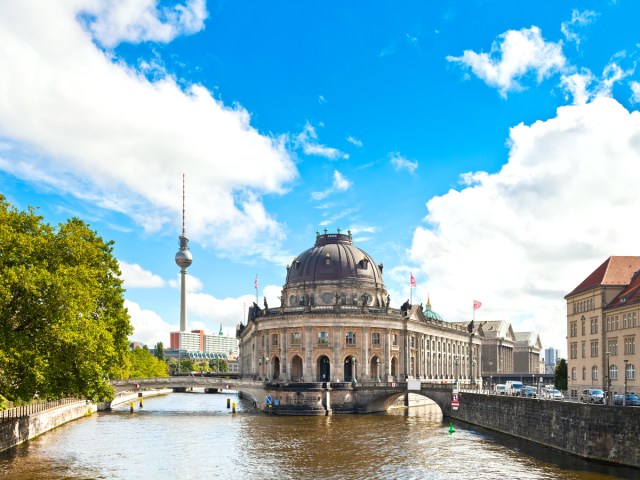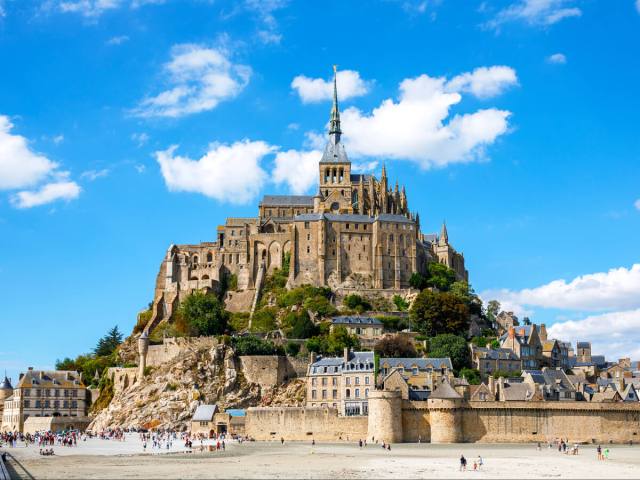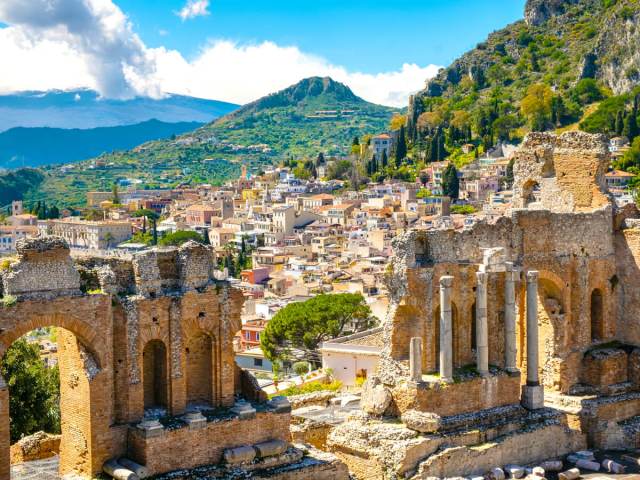Since 1972, UNESCO has worked tirelessly to preserve the most culturally significant landmarks around the globe. The organization’s World Heritage List includes stunning architectural marvels, ancient archeological sites, and awe-inspiring natural wonders, all of which carry tremendous importance to the nations where they’re located. There are nearly 1,200 UNESCO World Heritage Sites that are located throughout 168 independent states, though some countries have just one or two. On the flip side, there are several nations with dozens upon dozens of these fascinating sites within their borders. Discover the seven countries with the most UNESCO World Heritage Sites.
7. Mexico

Mexico contains a total of 35 UNESCO World Heritage Sites — the most of any country in the Western Hemisphere. Many of these are ancient landmarks dating back to the time when the Maya civilization ruled over the Yucatán Peninsula. Complexes such as Chichén Itzá and Uxmal boast incredible temples dating back to the first millennium that continue to attract countless visitors each year. The city of Teotihuacan is even older, predating both the Mayans and the Aztecs. This fascinating archeological site, located 30 miles northeast of Mexico City, contains a multitude of geometric pyramids dedicated to the moon, the sun, and various gods. Remarkably, it is believed to have once been the largest city on the entire North American continent.
Mexico is also full of UNESCO sites that are relatively more modern in nature, including the 16th-century city of Morelia. This historic location contains a series of buildings that combine the country’s rich Mesoamerican history with European influence, many of which are built using a lovely pink stone that the city is known for. Another Spanish-style town worth visiting is Guanajuato. This city is known for helping to pioneer many aspects of modern urban planning, and once served as the site of a 16th-century silver rush. Today, its colorful streets make it one of the more attractive destinations anywhere in the country.
6. India

There are 42 UNESCO sites found throughout India, the most popular of which is likely the Taj Mahal. This oft-photographed mausoleum was built in the city of Agra during the 17th century by emperor Shah Jahan, and remains one of India’s most recognizable landmarks. But just 1.5 miles away is an equally worthwhile UNESCO site — the Red Fort Complex. This Mughal fortress is made of vibrant red sandstone that makes it among the more colorful fortifications anywhere on the planet. In fact, portions of the complex remain in use for military purposes, though the majority of the structure has been converted into a beloved tourist destination.
India is also home to many important religious UNESCO sites. One of the most impressive religious sites is the Buddhist Mahabodhi Temple Complex, which towers 180 feet high and was built back in the fifth century. Today, Mahabodhi remains one of the oldest brick buildings in India. Another notable religious site is the Sun Temple in Konârek, which is a sacred Hindu structure. The temple was built in the 13th century and is decorated in stunning detail, with images carved into the stone that depict the sun god Surya being led by his chariot of six horses.
5. Spain

Spain is home to 50 World Heritage Sites, including three national parks that offer a fascinating glimpse into the country’s varied ecological beauty. Doñana is one such park with a series of diverse lagoons and marshlands, serving as a safe haven for five different threatened bird species. Then there’s Garajonay — located on the Canary Islands just off of Western Africa — which is known for its dense forests and lush vegetation that you’d be hard to find anywhere else on Spanish soil. Lastly, there’s Teide, a national park that contains its namesake stratovolcano, the highest peak anywhere in Spain.
Back in 1984, UNESCO also chose to honor one of Spain’s most prolific native sons, the visionary architect Antoni Gaudí. His works were officially added to the list of World Heritage Sites, including the incredible Sagrada Familia church in Barcelona. This uniquely designed structure remains unfinished despite construction beginning back in 1882, though ongoing work continues to preserve Gaudí’s vision. Elsewhere in the country, it’s worth trekking over to Grenada to visit the Alhambra. This ancient palace was built during Spain’s last Islamic dynasty in the 13th and 14th centuries, and contains beautiful rose-colored walls and offers stunning views of the surrounding city.
4. Germany

With 52 World Heritage Sites of its own, Germany is tied with France for having the third-most UNESCO sites of any country. One of the most fascinating landmarks in the country is Berlin’s Museumsinsel, which translates to “Museum Island” in English. It features five distinct museums each specializing in a different field and offering several options for art lovers. For instance, the Altes Museum is known for its Greek art dating back to the 10th century BCE, as well as its collection of over 1,300 ancient coins. The Bode Museum, on the other hand, contains an impressive sculpture collection as well as many pieces of ancient Byzantine art.
No trip to Germany would be complete without checking out the Cologne Cathedral, a Gothic masterpiece that was built beginning in 1248, though not completed until 1880. Despite the many centuries that passed during this process, architects took care to maintain the cathedral’s original vision, and today it’s considered one of the most stunning examples of Gothic architecture anywhere in the world. For a more serene experience, consider venturing out into the German countryside and visiting the Upper Middle Rhine Valley. This idyllic expanse is known for historic towns located along the rolling hills of Germany, as well as its many historic castles and vineyards.
3. France

France is home to 52 culturally significant sites found on UNESCO’s World Heritage List. One of the more awe-inspiring landmarks on said list is Mont-Saint-Michel. This tidal island is located off the coast of Normandy and contains an abbey built between the 11th and 16th centuries. Given its unique position surrounded by ever-changing tides, Mont-Saint-Michel has remained unconquered over several centuries and is one of the most successfully fortified locations in the country. Today, over 3 million annual visitors flock to this important Catholic site, which celebrated its one-thousandth anniversary in 2023.
The World Heritage List includes other well-known French sites such as the Palace of Versailles, which once served as the opulent residence for the kings of France. The palatial complex is also heralded for its well-manicured gardens, which draw in many tourists annually. UNESCO’s list also includes many ancient landmarks as well, such as a series of Roman monuments located near the city of Arles. These sites are in stunning condition given their age, and are highlighted by a two-tiered amphitheater built in the year 90 CE that once held chariot races in front of 20,000 spectators.
2. China

Next up on the list is China, with 57 UNESCO World Heritage Sites of its own. The first Chinese sites were designated back in 1987, and that inaugural class included the 13,000-mile-long Great Wall of China. In that same year, UNESCO also designated the Mausoleum of the First Qin Emperor as a worthwhile landmark. This burial site dates back to the third century BCE and was built for Emperor Quinshihuang, though it was lost for centuries before being rediscovered in 1974. Soon after, archaeologists unearthed the expansive Terracotta Army, which contains thousands of life-sized stone warriors and is one of the most fascinating archeological discoveries ever made.
Mount Emei is another important UNESCO site in China that combines the cultural with the natural. This mountain contains dozens of Buddhist monasteries dating back to the first century and is one of four deeply sacred Buddhist mountains located in China. It’s also worth checking out Mount Huangshan, which many consider to be the loveliest mountain in the country that inspired many works of Chinese art and literature.
1. Italy

No country contains more UNESCO World Heritage Sites than Italy, with 59 landmarks on the list. While the majority of these sites are cultural in nature, there are a few natural wonders worth visiting. One highlight is the remarkable Mount Etna, the most active stratovolcano anywhere in the world. Etna’s volcanic activity has been documented for 2,700 years, and has been the subject of many local myths and literary works. On the other side of the country are the towering crags of the Dolomites. These majestic snowy peaks are located in the northern Italian Alps and are renowned for their natural beauty and incredible ski opportunities.
In terms of culture, one of the more notable locations includes Villa Adriana in Tivoli. This ancient complex dates back to the second century and once served as the estate of Roman emperor Hadrian. What makes Villa Adriana particularly fascinating is its mix of Roman, Greek, and Egyptian architectural styles. UNESCO also inducted Florence’s historic city center onto the list, which boasts some of the world’s most incredible Renaissance-style buildings from the 15th century. Florence is also a mecca for art lovers, as the city’s Uffizi museum contains artistic works by Michaelangelo as well as Botticelli’s painting, Birth of Venus.
More from our network
Daily Passport is part of Optimism, which publishes content that uplifts, informs, and inspires.























